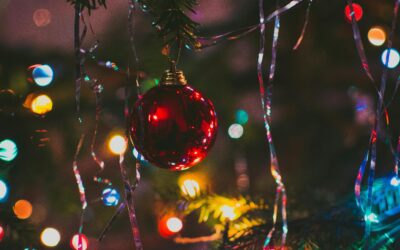As the days grow shorter and the temperatures begin to drop, it’s time to start thinking about
preparing your trees and shrubs for winter. In Virginia, where the climate can be
unpredictable, proper pruning and trimming of trees and shrubs are essential for maintaining a
healthy, vibrant garden year-round. This guide will help you understand the importance of
pruning and trimming, when and how to do it, and how these practices can protect your plants
from the harsh winter conditions.
Why Pruning and Trimming are Essential
Preparing your trees and shrubs for winter by pruning and trimming is crucial for the overall health
and longevity of your trees and shrubs. These practices not only help maintain the aesthetic appeal
of your landscape but also promoteplant health by removing dead or diseased branches, encouraging
new growth, and improvingair circulation. By reducing the density of branches, you can also minimize
the risk of damage from heavy snow and ice, which are common in Virginia during the winter months.
Removing Dead and Diseased Wood
One of the primary reasons to prune your trees and shrubs is to remove dead, dying, or
diseased wood. Dead branches are not only unsightly but can also become a safety hazard
during winter storms. Snow and ice accumulation on these branches can cause them to break,
potentially damaging property or injuring people. Moreover, diseased wood can spread
infections to healthy parts of the plant, compromising the overall health of your garden. By
removing these problematic branches, you can prevent the spread of disease and ensure your
plants remain strong and healthy.
Encouraging New Growth
Pruning is a powerful tool for encouraging new growth in trees and shrubs. When you remove
old or overgrown branches, you signal to the plant that it’s time to produce new shoots and
leaves. This is particularly important for shrubs and hedges that can become leggy and sparse if
not regularly pruned. By trimming these plants back in the fall, you’re setting the stage for a
burst of new growth in the spring, ensuring your garden looks lush and full.
Improving Air Circulation and Sunlight Penetration
Another benefit of pruning and trimming is that it improves air circulation and allows more
sunlight to penetrate the plant canopy. This is especially important for dense shrubs and trees,
where poor air circulation can lead to the development of fungal diseases. By thinning out the
branches, you can reduce the likelihood of disease and promote healthier growth. Additionally,
more sunlight reaching the inner parts of the plant can encourage more even growth and better
flowering and fruiting in the following season.
Timing Your Pruning and Trimming
Knowing when to prune and trim your trees and shrubs is just as important as knowing how to
do it. In Virginia, the best time to prune most trees and shrubs is in late fall to early winter, after
the leaves have fallen but before the first heavy frost. This timing allows you to see the structure
of the plant more clearly and ensures that the wounds created by pruning have time to heal
before the coldest weather sets in.
Deciduous Trees
Deciduous trees, which lose their leaves in the fall, should be pruned after the leaves have
dropped. This usually occurs in late October to early November in Virginia. Pruning at this time
reduces the risk of disease transmission and allows the tree to focus its energy on healing the
pruning wounds rather than supporting leaves and new growth.
Evergreen Shrubs
Evergreen shrubs, such as boxwood and holly, can be pruned slightly later in the season,
usually in late November to early December. These plants are more resilient to cold weather
and can tolerate pruning closer to the onset of winter. However, it’s important not to prune too
late, as the wounds may not have enough time to heal before the first frost.
Flowering Shrubs
For flowering shrubs, timing is key to ensuring you don’t accidentally remove next year’s flower
buds. Shrubs that bloom on old wood, such as azaleas and rhododendrons, should be pruned
immediately after flowering in the spring. However, shrubs that bloom on new wood, like
butterfly bush and hydrangeas, can be pruned in late fall or early winter.
How to Prune and Trim Properly
Pruning and trimming require careful planning and execution to ensure you don’t cause damage
to your plants. Here are some tips for pruning and trimming your trees and shrubs correctly:
Use the Right Tools
Invest in high-quality pruning tools, such as bypass pruners, loppers, and a pruning saw. Sharp,
clean tools will make clean cuts and reduce the risk of disease transmission. Make sure to
sterilize your tools between cuts, especially when pruning diseased wood.
Make Clean Cuts
When pruning, always make clean cuts just above a bud or branch junction. Avoid leaving
stubs, as these can become entry points for pests and diseases. If you’re removing a large
branch, use the three-cut method: make an undercut a few inches from the trunk, then a top cut
further out on the branch, and finally, remove the stub close to the trunk.
Don’t Over-Prune
While it’s important to remove dead or diseased wood, be careful not to over-prune your trees
and shrubs. Removing too much foliage can stress the plant and reduce its ability to produce
energy through photosynthesis. A good rule of thumb is to remove no more than one-third of the
plant’s total foliage in a single pruning session.
Focus on Structure
When pruning, focus on improving the structure of the tree or shrub. Remove any crossing or
rubbing branches, as these can cause wounds that are susceptible to disease. Aim to create an
open, balanced canopy that allows light and air to penetrate evenly.
Protecting Your Investment with Jack’s Lawn Care & Landscaping
Preparing your trees and shrubs for winter through proper pruning and trimming is an
investment in the long-term health and beauty of your landscape. By taking the time to prune
and trim your plants in the fall, you can ensure they emerge healthy and vibrant in the spring,
ready to enhance your garden with new growth and blooms.
At Jack’s Lawn Care & Landscaping, we understand the unique challenges of maintaining a
landscape in Virginia’s variable climate. Our team of experts is trained in the latest pruning and
trimming techniques and can help you prepare your trees and shrubs for the winter months.
Whether you need a simple trim or a comprehensive pruning plan, we’re here to help. Contact
us today to schedule your fall pruning and ensure your landscape is ready for whatever winter
brings.



